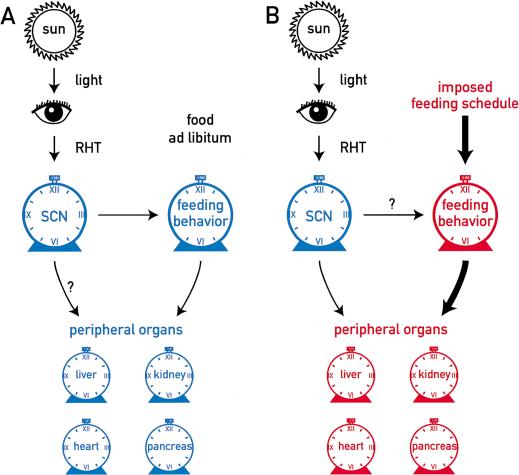Figure 8.
Hypothetical model on the entrainment of peripheral oscillators. The central circadian pacemaker in the suprachiasmatic nucleus (SCN) is entrained by solar cycles via the retino-hypothalamic tract (RHT). (A) When food is available throughout the day or during the normal activity phase (dark phase in nocturnal animals), the SCN synchronizes peripheral clocks via cycles in the secretion of blood-borne factors (e.g., hormones) or temperature rhythms. Both of these time cues may ultimately be controlled by the feeding behavior governed by the SCN. (B) When food is only available during the phase at which the animals are normally inactive (light phase in nocturnal animals), signals triggered by food processing and/or the lack of food processing act as dominant Zeitgebers on the oscillators of peripheral tissues.

